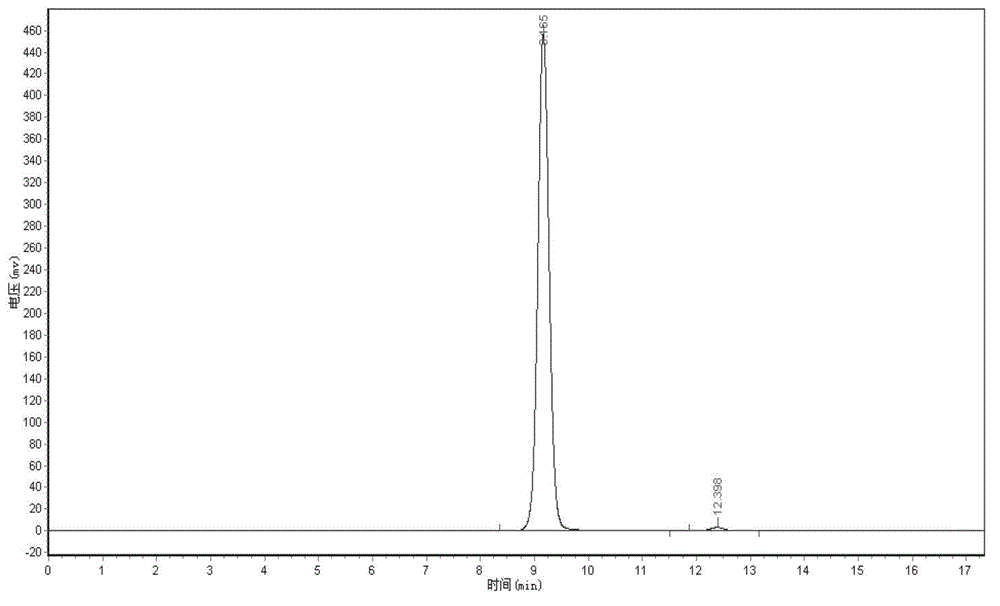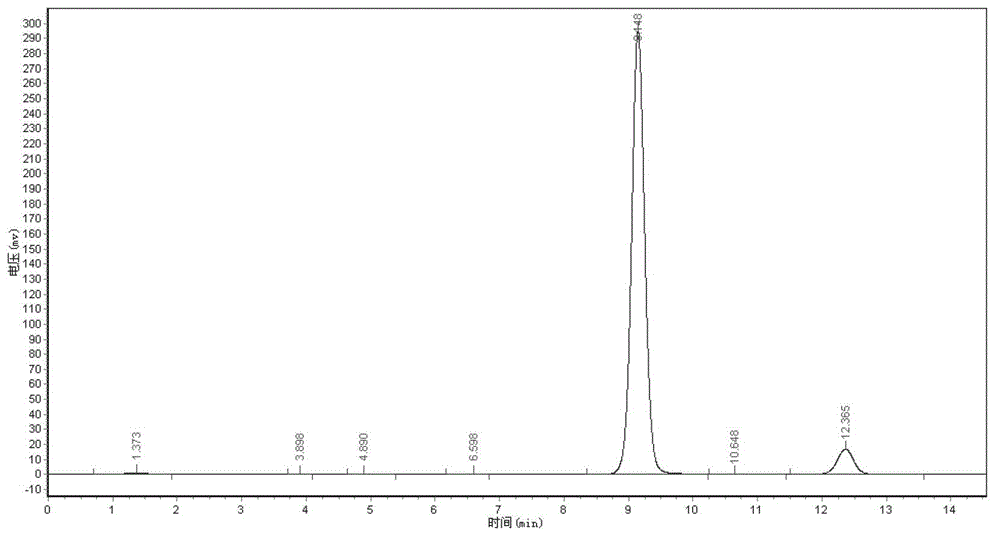A method for extracting oleuropein and biflavone from olive leaves
A kind of technology of biflavone and oleuropein of Suicha spica, applied in the field of natural product chemistry, can solve the problems of long separation process, reduced content of active ingredients, low yield of active ingredients, etc., and achieve the effect of reducing production costs and saving resources
- Summary
- Abstract
- Description
- Claims
- Application Information
AI Technical Summary
Problems solved by technology
Method used
Image
Examples
Embodiment 1
[0028] Weigh 100kg of olive leaves, pulverize them with an ordinary pulverizer, add 400L of 60% ethanol to mix, heat to about 50°C for reflux extraction for 10 hours, filter twice with three layers of gauze and once with a ceramic membrane; After the residue, concentrate under reduced pressure at 50°C until there is no ethanol smell, and obtain 80L of concentrated solution; extract the concentrated solution with 200L of ethyl acetate three times, separate and obtain three ethyl acetate layers, combine 220L of ethyl acetate extract, Concentrate the extract under reduced pressure at 50°C until 2.65kg of dry matter is obtained; dissolve the dry matter with 2.65kg of water, adsorb on H-103 macroporous resin, elute with 40% ethanol, and collect the eluate 40L of Ⅰ, then eluted with 70% ethanol, collected 30L of eluate II; concentrated the eluent Ⅰ to 8L under reduced pressure, added 24L of absolute ethanol at 4°C for crystallization and recrystallization, and obtained oleuropein 1.1...
Embodiment 2
[0030] Weigh 200kg of olive leaves, pulverize them with an ordinary pulverizer, add 600L of 60% ethanol to mix, heat to about 50°C for reflux extraction for 10 hours, filter twice with three layers of gauze and once with a ceramic membrane; After the residue, concentrate under reduced pressure at 50°C until there is no ethanol smell, and obtain 150L of concentrated solution; extract the concentrated solution with 350L of ethyl acetate three times, separate and obtain three ethyl acetate layers, and combine 380L of ethyl acetate extracts, Concentrate the extract under reduced pressure at 50°C until 5.48kg of dry matter is obtained; dissolve the dry matter with 5.48kg of water, adsorb on H-103 macroporous resin, elute with 40% ethanol, and collect the eluate Ⅰ60L, and then eluted with 70% ethanol, collected 45L of eluate II; concentrated the eluent Ⅰ to 12L under reduced pressure, added 36L of absolute ethanol to crystallize and recrystallize at 4°C, and obtained 2.35kg of oleuro...
Embodiment 3
[0032] Weigh 500kg of olive leaves, pulverize them with an ordinary pulverizer, add 2000L of 60% ethanol to mix, heat to about 50°C for reflux extraction for 10 hours, filter twice with three layers of gauze and once with a ceramic membrane; After the residue, concentrate under reduced pressure at 50°C until there is no ethanol smell, and obtain 300L of concentrated solution; extract the concentrated solution with 800L of ethyl acetate three times, separate and obtain three ethyl acetate layers, and combine 850L of ethyl acetate extracts, Concentrate the extract under reduced pressure at 50°C until 11.28 kg of dry matter is obtained; dissolve the dry matter with 11.28 kg of water, adsorb on H-103 macroporous resin, elute with 40% ethanol, and collect the eluate 150L of Ⅰ, then eluted with 70% ethanol, collected 120L of eluate II; concentrated the eluent Ⅰ to 30L under reduced pressure, added 90L of absolute ethanol at 4°C for crystallization and recrystallization, and obtained ...
PUM
 Login to View More
Login to View More Abstract
Description
Claims
Application Information
 Login to View More
Login to View More - R&D
- Intellectual Property
- Life Sciences
- Materials
- Tech Scout
- Unparalleled Data Quality
- Higher Quality Content
- 60% Fewer Hallucinations
Browse by: Latest US Patents, China's latest patents, Technical Efficacy Thesaurus, Application Domain, Technology Topic, Popular Technical Reports.
© 2025 PatSnap. All rights reserved.Legal|Privacy policy|Modern Slavery Act Transparency Statement|Sitemap|About US| Contact US: help@patsnap.com



